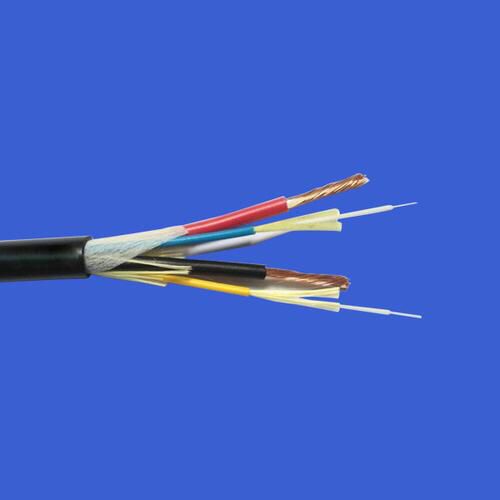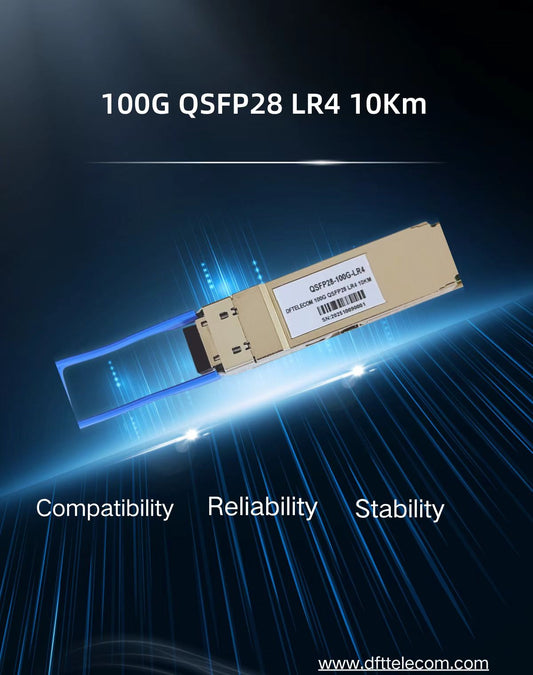Artificial Intelligence (AI) is no longer a buzzword—it’s the engine driving innovation across healthcare, finance, manufacturing, and beyond. But as models grow exponentially (think GPT-4, DeepMind’s multimodal systems, and next-gen robotics), so do the demands on data infrastructure. At the heart of this transformation lies a critical but often overlooked component: optical communication. In this post, we’ll explore how light-based networking is solving AI’s most pressing challenges—and why it’s poised to become the backbone of tomorrow’s AI powerhouses.

The Bottleneck in AI: When Data Outpaces Traditional Networks
Modern AI systems thrive on speed and scale. Training a state-of-the-art large language model (LLM) like GPT-4 requires processing terabytes of data at lightning speed, while real-time applications (e.g., autonomous vehicle decision-making or medical imaging) demand near-instantaneous data exchange. But traditional copper-based networks? They’re hitting a wall. Even the fastest Ethernet cables max out at ~100Gbps, and latency creeps up as data hops between servers, routers, and storage systems. For AI, this translates to:
Slower training times: Longer data transfer delays mean models take days (or weeks) to converge instead of hours.
Higher operational costs: Redundant data retransmissions and inefficient cooling for overheated copper infrastructure inflate energy bills.
Scalability limits: Copper struggles to keep up as AI clusters grow from dozens to thousands of nodes. Enter optical communication: a technology that uses light (instead of electricity) to transmit data through fiber-optic cables. It’s not just faster—it’s a game-changer for AI’s infrastructure needs.
Why Optical Communication is AI’s Secret Weapon
Optical communication isn’t just a “faster version” of old tech—it addresses AI’s unique challenges head-on:
1. Unprecedented Bandwidth: Handling AI’s Data Flood
Optical fibers can carry *petabits per second* (Pbps) of data—100x more than the fastest copper cables. For AI, this means:
Faster model training: A 10x increase in bandwidth reduces training time for large models by 30-50% (industry estimates).
Real-time inference: Low-latency optical links enable instant responses for AI applications like fraud detection or autonomous systems.
2. Lower Latency: Bridging the “Last Mile”
Light travels at ~2/3 the speed of light in fiber, and optical switches eliminate the electrical bottlenecks of copper networks. For AI clusters, this means:
Reduced synchronization delays: In distributed training, nodes stay in sync with microsecond precision, speeding up convergence.
Edge AI acceleration: Real-time processing at the edge (e.g., in IoT devices or factory robots) requires sub-millisecond latency—optical networks deliver exactly that.
3. Sustainability: Powering AI Without Breaking the Bank
Data centers account for ~1% of global electricity use, and AI is supercharging that. Optical modules are *more energy-efficient* than their copper counterparts:
A 1.6T optical module uses ~30% less power per bit than legacy 100G copper solutions. - Over a data center with 100,000 servers, this efficiency translates to *megawatts saved annually*—enough to power thousands of homes.
Optical Communication in Action: Where AI Meets Light
Let’s break down how optical tech is already transforming AI workflows:
- Data Center Interconnects: The “Nervous System” of AI Clusters AI training requires massive clusters of GPUs/CPU nodes communicating constantly. Optical networks connect these nodes via high-speed modules like DFT’s 800G QSFP-DD and emerging 1.6T QSFP56 models. These modules: - Enable peer-to-peer data sharing (e.g., gradient synchronization in distributed training) at 1.6Tbps speeds. - Reduce power consumption by 40% compared to older 400G modules.
- Cross-Data Center Training: Scaling AI Globally When datasets are too large for a single data center, AI teams use *federated learning*—training models across geographically distributed nodes. Optical fibers connect these centers with low-latency links, ensuring: 1 Seamless data transfer without bottlenecks. - Compliance with data privacy laws (e.g., keeping patient data local in healthcare AI)
- Edge AI: Bringing Intelligence to the “Front Lines” .Edge AI devices (e.g., industrial sensors, smart cameras) need real-time processing to avoid cloud delays. Optical networks deliver: - Low-latency connectivity between edge devices and central servers. - Bandwidth to stream high-resolution video or sensor data for instant analysis.
The Future: Silicon Photonics and Beyond
Optical communication is evolving fast.The next frontier? Silicon photonics—a technology that integrates light-emitting components directly onto silicon chips, enabling smaller, faster, and cheaper modules. For AI, this means:
- Miniaturized modules: Smaller form factors (e.g., QSFP56) fit into denser server racks, packing more compute into less space. -
- Cost reductions: Mass production of silicon photonics modules could drive prices down by 50% over the next 3 years.
- New capabilities: Faster wavelengths (e.g., 1.3μm and 1.55μm) reduce signal loss, extending transmission distances without repeaters. Companies like Google, Microsoft, and AWS are already piloting silicon photonics-based optical modules for their AI workloads. By 2026, we’ll see these modules in mainstream data centers.
- Conclusion: Optical Communication = AI’s Next Big Thing
- AI’s growth isn’t just about better algorithms—it’s about infrastructure. Optical communication solves the critical bottleneck of data transfer, enabling faster training, lower costs, and more scalable AI systems. As silicon photonics and 1.6T modules become mainstream, we’re on the cusp of a new era where AI’s potential is limited only by our ability to connect it.
- For businesses investing in AI, now’s the time to prioritize optical solutions. Whether upgrading data center interconnects or building edge AI networks, optical technology will be the invisible force powering your next breakthrough.
- At DFT, we’re at the intersection of AI and photonics, offering cutting-edge optical modules (from 200G QSFP56 to future 800G/1.6T solutions) designed for AI’s demands. Let’s build the infrastructure that powers tomorrow’s intelligence. --- -What’s your take on optical communication’s role in AI? Share your thoughts in the comments below—let’s discuss how light is shaping the future of AI.
#AI #OpticalCommunication #DataCenter #SiliconPhotonics #Innovation #DFTTELECOM






